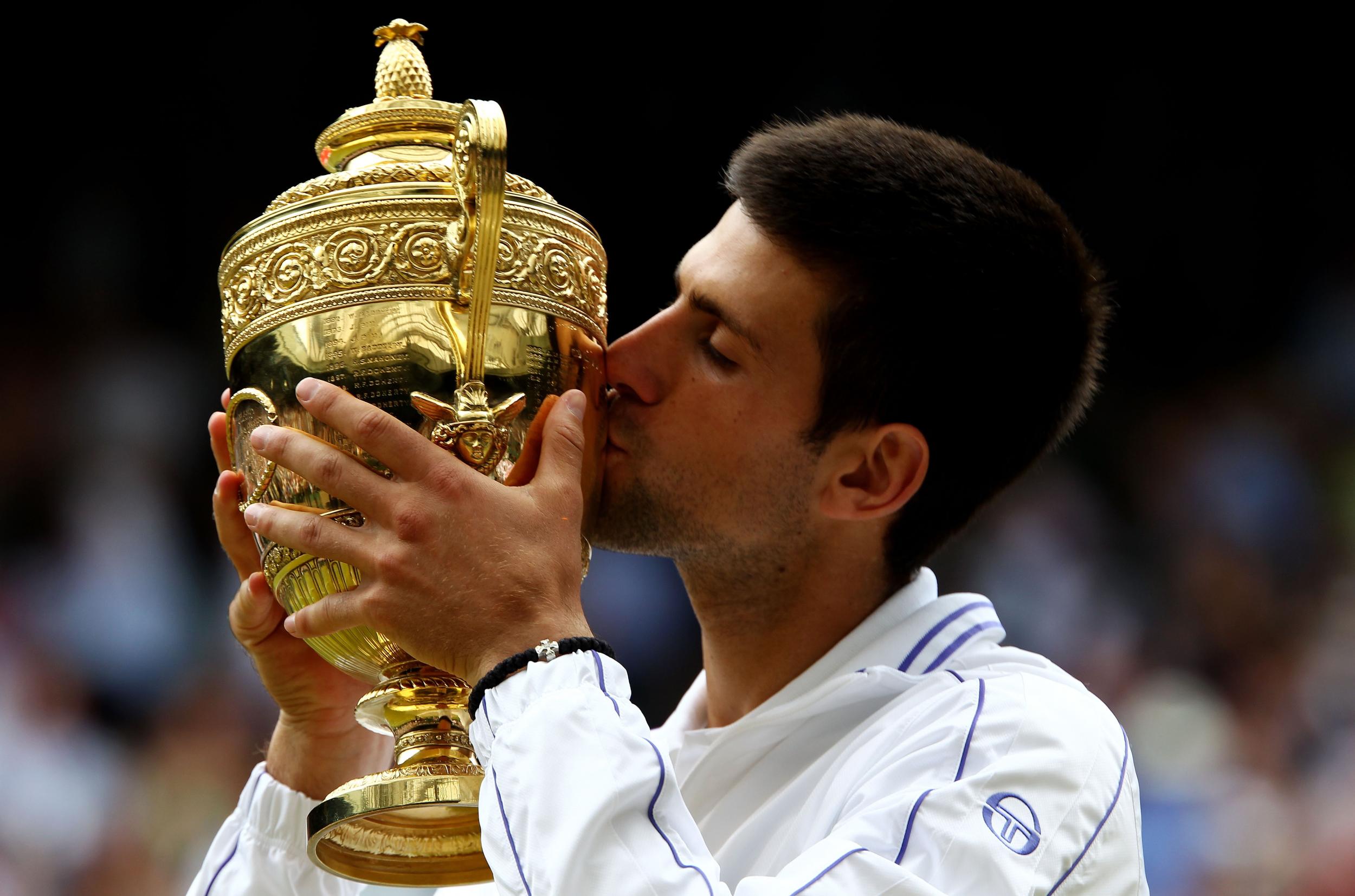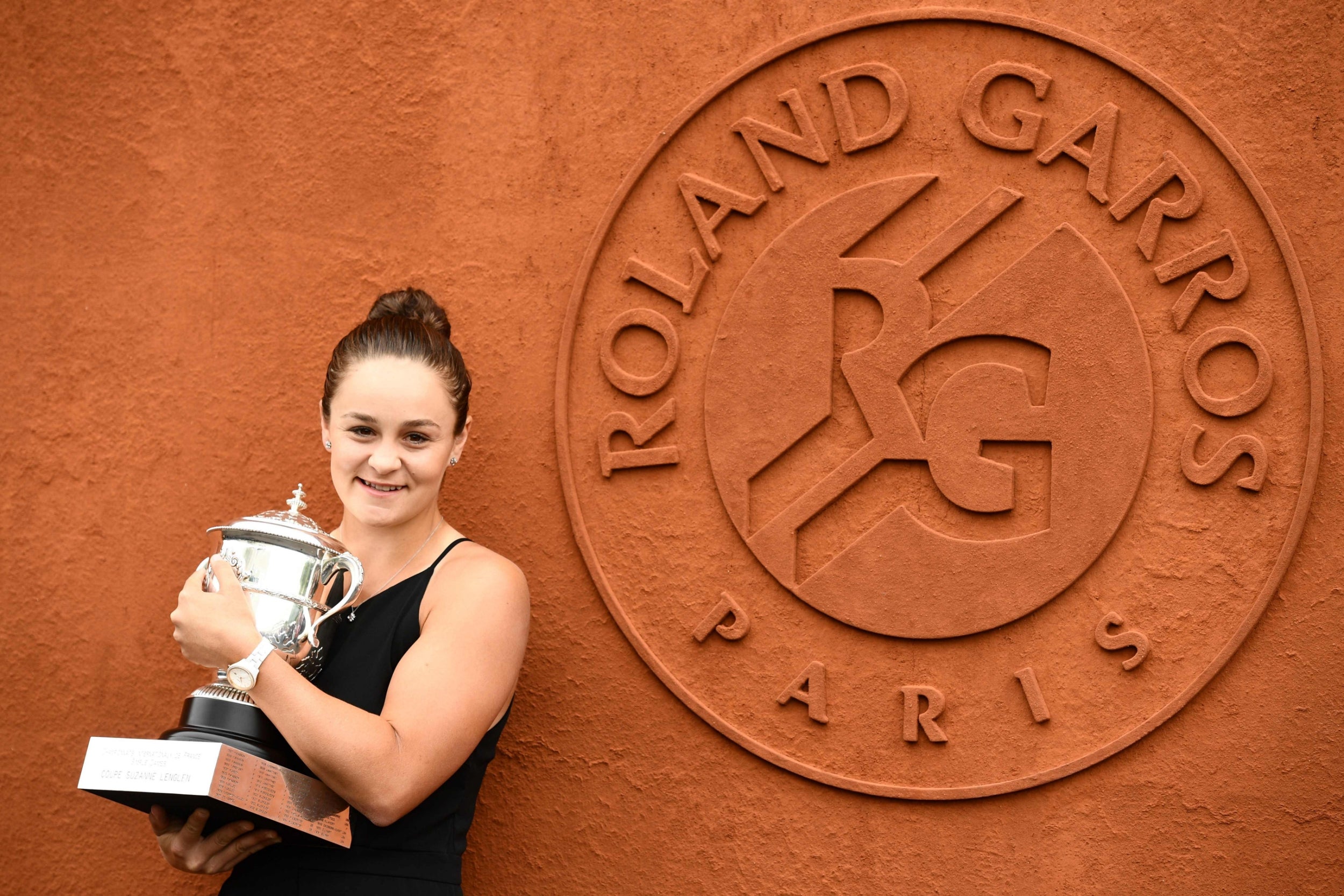Wimbledon 2019: Old guard of Federer, Nadal and Djokovic still the ones to beat at new-look SW19
Look closely and you will find numerous changes to The Championships this year, but the dominance of the biggest names in men's tennis looks set to go on for a little while longer

Your support helps us to tell the story
From reproductive rights to climate change to Big Tech, The Independent is on the ground when the story is developing. Whether it's investigating the financials of Elon Musk's pro-Trump PAC or producing our latest documentary, 'The A Word', which shines a light on the American women fighting for reproductive rights, we know how important it is to parse out the facts from the messaging.
At such a critical moment in US history, we need reporters on the ground. Your donation allows us to keep sending journalists to speak to both sides of the story.
The Independent is trusted by Americans across the entire political spectrum. And unlike many other quality news outlets, we choose not to lock Americans out of our reporting and analysis with paywalls. We believe quality journalism should be available to everyone, paid for by those who can afford it.
Your support makes all the difference.One of Wimbledon’s enduring qualities is that while nothing ever seems to change, The Championships never feel outdated. That feeling will be reinforced when spectators walk into the All England Club on Monday for the start of the 133rd edition of the world’s most famous tournament.
As ever, Wimbledon has preserved its image of tennis in an English garden, but look closer and you will find numerous changes. Forty construction and refurbishment projects have been carried out around the grounds since last summer, with the installation of a retractable roof over No 1 Court the most spectacular of them.
With two extra rows of seats installed, No 1 Court’s capacity has risen to 12,345, while up to 42,000 people (an increase of 3,000 on last year) will be admitted to the grounds each day. Play starts earlier on the outside courts (at 11am) and there will be no repeat of last year’s six-and-a-half-hour marathon between John Isner and Kevin Anderson because, for the first time, tie-breaks will be played at 12-12 in deciding sets.
Could this also be the time for change in the men’s singles? Perhaps not. It is 17 years since anyone other than Roger Federer, Novak Djokovic, Rafael Nadal or Andy Murray won the title here and it is hard to construct an argument that says a new name will be engraved on the winner’s trophy in a fortnight’s time.
Murray will compete only in doubles – a major achievement given that he underwent hip surgery in January which he feared might end his career – but his three great rivals appear as formidable as ever.
Federer in particular continues to defy the march of time. The Swiss will be 38 in August, but his victory in Halle last weekend – his 10th title at the event and the 102nd of his career – was another vivid demonstration of his grass-court prowess.
The eight-time Wimbledon champion is the only man to have won three tour titles this year and as he prepares for his 20th appearance here his fitness seems to be as good as ever. Many wondered whether playing the clay-court season for the first time since 2016 might damage his chances on grass, but the evidence so far would seem to suggest otherwise.
When Djokovic won his 15th Grand Slam title at the Australian Open in January, the world No 1 was already a strong favourite to retain his Wimbledon title this summer, but his on-court fortunes have dipped in the intervening five months. The 32-year-old Serb has won only one title since then and has not played any warm-up tournaments before Wimbledon, though that has not stopped him finding his best form here in the past.
The suspicion is that Djokovic’s off-court political distractions might be affecting his game. As president of the ATP’s player council he has been at the centre of controversies surrounding the non-renewal of Chris Kermode’s contract as the ATP’s executive chairman and Justin Gimelstob’s position on the ATP board. While most of his rivals for the Wimbledon title were no doubt taking the chance to relax on Friday evening, Djokovic was presiding over a seven-hour meeting of the player council.

Nadal also starts Wimbledon without any competitive grass-court matches under his belt, but the French Open champion’s biggest concern might be his draw. If he finds his way past Yuichi Sugita in the first round Nadal could next face Nick Kyrgios, who shocked the Spaniard here five years ago and beat him in their most recent meeting in Acapulco earlier this year.
Denis Shapovalov, the outstanding 20-year-old Canadian, is a potential third-round opponent for Nadal, who is then seeded to meet Marin Cilic in the fourth round, Dominic Thiem in the quarter-finals and Federer in the semi-finals.
While a number of younger players have been making their mark in the last two years, ultimate Grand Slam success has continued to elude them. Alexander Zverev, Daniil Medvedev, Karen Khachanov and Alex de Minaur have all made major strides in the last 12 months, but Stefanos Tsitsipas and Felix Auger-Aliassime could prove to be the two best long-term prospects.
Both men combine a big-match temperament with outstanding talent and both have the charisma that so often separates champions from the rest. This Wimbledon might be too early for 18-year-old Auger-Aliassime, but 20-year-old Tsitsipas, who beat Federer at the Australian Open and has a great game for grass, has an assurance about him that suggests he would be ready for any challenge.
Tsitsipas is seeded to meet Kyle Edmund in the third round. Edmund, who opens his campaign against Spain’s Jaume Munar on Centre Court on Monday, starts the tournament as British No 1, but it would be no surprise if Dan Evans was the last home player standing in the men’s singles. Evans, who starts against Argentina’s Federico Delbonis, has had an excellent grass-court season so far.
Johanna Konta will be Britain’s main hope in the women’s singles. Two years after reaching the Wimbledon semi-finals, the world No 19 has prospered since appointing Dimitri Zavialoff as her coach at the end of last year and reached the semi-finals of the French Open for the first time earlier this month.
Criticised in the past for being too one-dimensional, Konta has added to her game and become a much better all-round player. However, the question of how far she can go is likely to depend on how she handles the pressures. The manner of her semi-final loss to Marketa Vondrousova at Roland Garros last month, when she lost in two sets after leading 5-3 in both, suggests she still has work to do.
While the wait for a changing of the guard among the men might go on, we have already seen some major changes in the landscape of the women’s game. Serena Williams (aged 37) and Angelique Kerber (aged 31) are the only thirty-somethings in the world’s top 15, while the top two, Ashleigh Barty and Naomi Osaka, are aged just 23 and 21 respectively.
Barty went to the top of the rankings when she followed up her maiden Grand Slam title at the French Open by winning at Edgbaston. The Australian has a technically beautiful game and would be a hugely popular champion among traditionalists.
Osaka won the two Grand Slam tournaments before Roland Garros and although the Japanese has sometimes struggled since then, there can be no doubting her exceptional talent. Karolina Pliskova and Kiki Bertens have both been in outstanding form, while 17-year-old Amanda Anisimova, who reached the semi-finals in Paris, is surely a Grand Slam singles champion in-waiting.

A fit Petra Kvitova would always be seen as a serious contender here, but the two-times champion has been nursing an arm injury which has prevented her playing any warm-up tournaments.
As usual, the biggest questions will surround Williams, who needs one more Grand Slam title to equal Margaret Court’s all-time record of 24. Williams has proved plenty of times in the past that she can play her way into tournaments despite limited preparation, but it remains to be seen how much she will be affected by the knee problem that has troubled her this year.
The suspicion here is that Court’s record will still be intact in a fortnight’s time, when we might instead witness a rare French Open-Wimbledon double by Barty.
Join our commenting forum
Join thought-provoking conversations, follow other Independent readers and see their replies
Comments